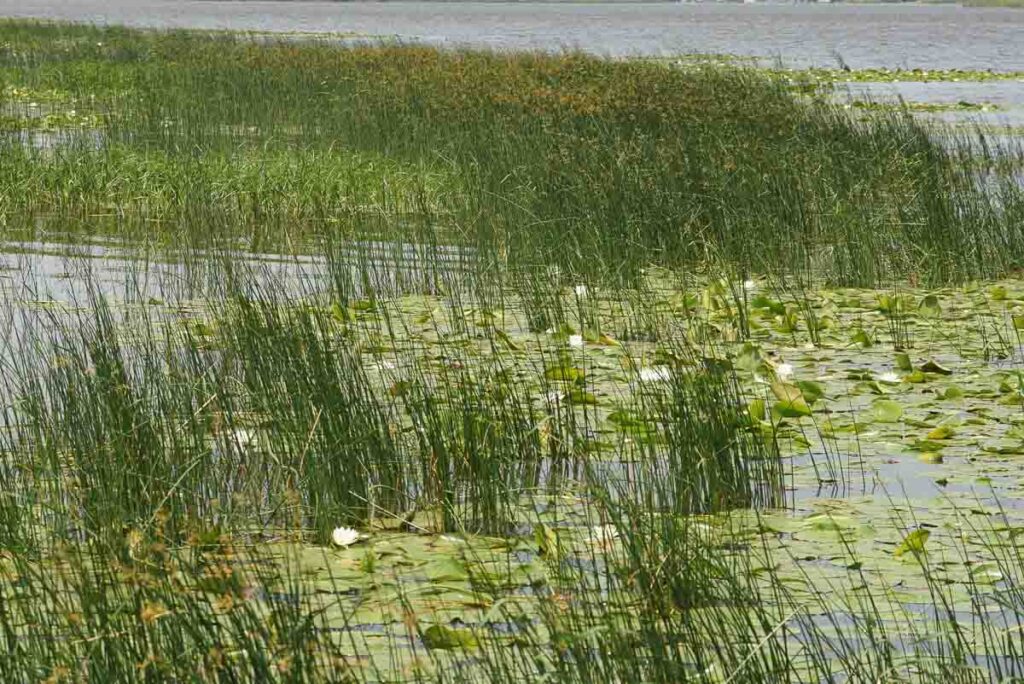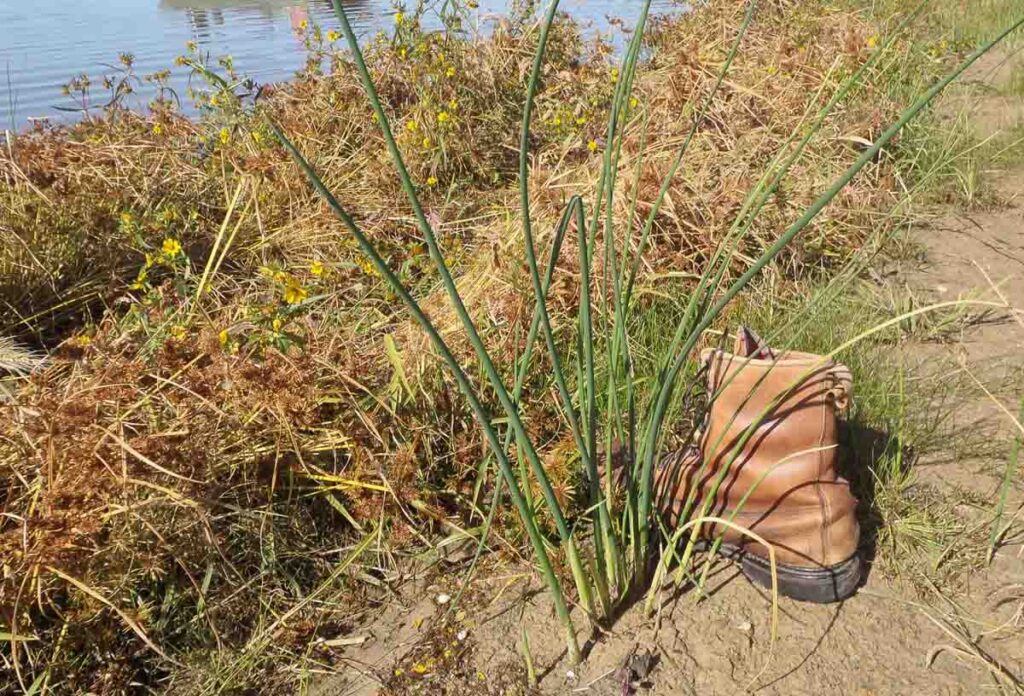Hardstem bulrush Schoenoplectus acutus
Other names: Tule
Synonyms: Scirpus acutus Muhl. ex Bigelow, Schoenoplectus lacustris
Plant Family: Sedge, Cyperaceae
Wetland Indicator Status OBL
Hardstem bulrush (Schoenoplectus acutus) is a valuable plant to fish and wildlife. The long, narrow stems a great location for spawning Northern Pike to adhere their eggs. In early spring, yellow perch drape the zigzag-shaped egg masses on the dead stems. As summer nears, the stems, bluegills, and other male sunfishes create nests and attract females. If the bulrush beds are thick enough, birds will make their nests, like Redhead ducks, black terns, and Forster’s Terns, to name a few. Muskrats will also make use of bulrush beds as a source of food and building materials. Come fall, the seeds of bulrush attract many species of duck to power their southern migration.

Biology and ecology of Hardstem Bulrush
Hardstem bulrush, like its close cousin softstem bulrush, and three square bulrush. Have very specific requirements for seed germination. The small seeds are tough and can withstand decades of waiting for the proper conditions to germinate. Those conditions are: exposed soil and warm temperatures after at least one season of cold treatment (winter). Typically these conditions occur during drought years. The seeds of these species will not germinate underwater. If a very young seedling is covered with water after germination, it is not likely to survive. One of hardstem bulrushes’ greatest problems is artificial water level management that prevents these sorts of drought conditions.

Because of the strict requirements for germination and early growth of these bulrushes, most reproduction occurs vegetatively. The plants send out rhizomes from the parent plant and new shoots. This can occur under most water level conditions, but growth is greatest in shallow water or saturated soil conditions in the dry season or drought years.
Bulrush Use by Native Americans
Harstem and other bulrushes were very useful to Native Americans. They ate the tender, white base of the stem raw. Rhizomes (roots) were eaten raw or boiled. They were also dried, pounded into flour, and baked into bread. Seeds were also eaten.
Stems made a great material for weaving into mats, window coverings, baskets, and houses. There were also used to secure clothing and wrap sandals.
Hardstem Bulrush Links
